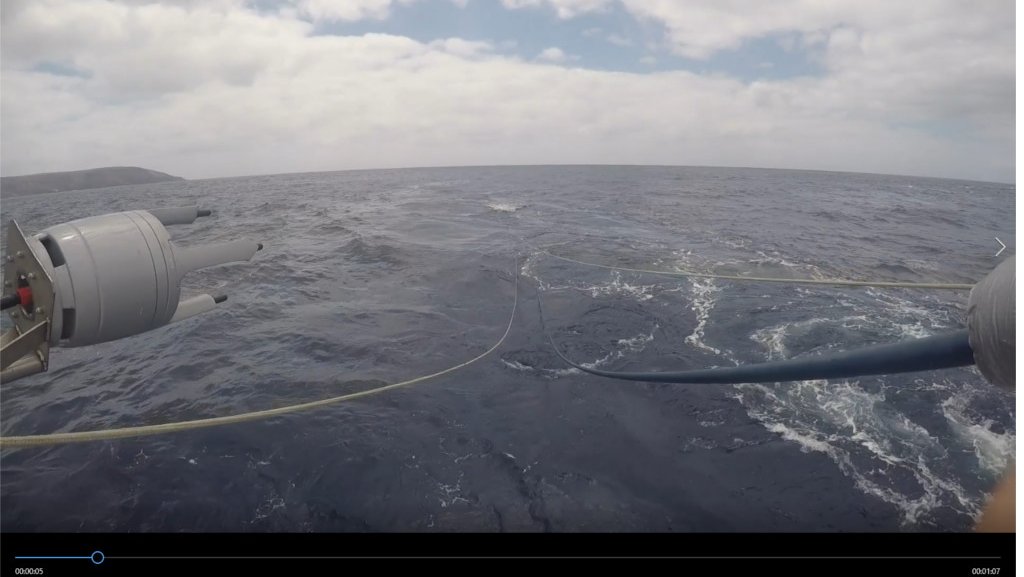BOOMER high resolution seismic reflection system
BOOMER high resolution seismic reflection system
This film shows the high resolution seismic reflection system BOOMER being used during the campaign of the Hydrographic Institute, SEDMAR, held in May 2017, aboard the NRP "Almirante Gago Coutinho" hydrographic vessel in the Madeira Sea.
At the end of the film are shown, by way of example, images of a section of a seismic profile, obtained from this system. It presents an original image of the profile and another one, with the same profile, already interpreted.
The seismic reflection is a technique that uses the propagation of compressive waves, similar to those generated by an earthquake, to obtain a profile of the existing structures in the marine subsoil. From the reflectors present in the seismic profile it is possible to infer the nature and structure of the different sedimentary layers.
This geophysical prospecting method is used for different purposes and with different resolutions. Systems with low resolution and high penetration are used in oil prospecting and in regional geology studies, while higher resolution but lower penetration systems such as those in the Hydrographic Institute (HI) are used in basic studies for implementation Maritime-port structures, underwater archeology, inert volume calculation and dredging control, and in detailed geological studies.
A high resolution seismic system usually consists of four components:
- A source of energy that accumulates the electrical energy that will be transmitted to the acoustic source at regular intervals of time;
- An acoustic source that receives the electrical energy and transforms it into mechanical energy, generating a sound wave;
- A set of hydrophones that receives the signal which is reflected by the discontinuities in the bottom (for example between a layer of clay and another of sand, between a layer of sand and the rocky substrate, or a fault zone); and
- A signal control, acquisition and processing system, consisting of a computer and its software that allows visualization of the seismic profile.
The variety of the existing components allows to adjust the system to the survey’s purpose, thus ensuring the quality of the final result. In IH there are three different types of high resolution seismic systems that use different acoustic sources: SPARKER, BOOMER and SUB-BOTTOM PROFILING type CHIRP.
In a BOOMER acoustic source, is obtained a pulse of shorter duration and higher resolution, although with less penetration. The electric energy is discharged on a coil generating a magnetic field that violently repels a metal plate, producing a pressure wave. The BOOMER board is mounted on a surface towed catamaran.
General characteristics of the equipment:
- Sound source type: Plate magnetically repelled, towed to the surface on a catamaran.
- Frequencies emitted: 200 Hz to 8.5 kHz (-6 dB).
- Typical sediment penetration: 5 to 100 m, variable with sediment power and type.
- Resolution: 30 to 50 cm, depending on the power.






